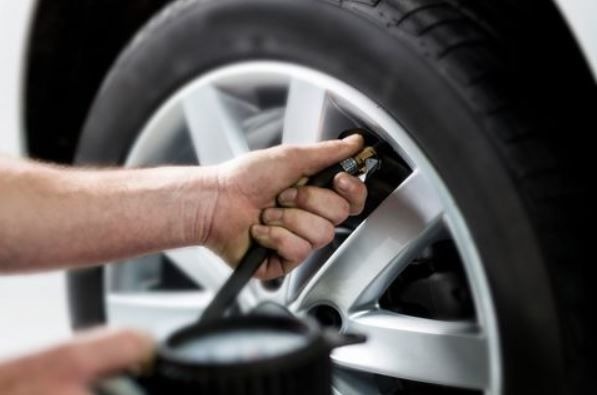Tires provide a footprint, called a contact patch, that is designed to match the weight of the vehicle with the bearing strength of the surface that it rolls over by providing a bearing pressure that will not deform the surface excessively.
There are instances when you can get the tire—and your whole car—back on the road with a quick tire repair. Here, we’re going to guide you on when you should either repair or replace a tire.
1. Regular tire inspection
Make sure your tires are in excellent shape. If they’re not in good shape, have them replaced. Worn or cracked tires or tires that are out of balance can hinder driving and control of your car. So, have your tires inspected regularly. Most winter accidents are caused by loss of control of the vehicle on snowy or icy roads.
2. Punctures
As long as the puncture is in the tread area and it is no wider than a quarter of an inch (1/4) in diameter, a tire deflated by a nail or any other object can be fixed. The tread is the part of the tire that comes in contact with the road surface.
If the puncture is in the sidewall of the tire, you have got to replace the tire. In case of more than one puncture on a tire, you can probably get the tire repaired at a trustworthy New Orleans tire repair shop, if the distance between each puncture is not more than 15 inches from each other. Else, you have to buy a new tire.
Tires that were seriously damaged in a crash should be replaced. Tires with damages such as big cuts or tread separation should be replaced, not repaired. No its, no ands, no buts. You have to replace the tire. Your safety comes first.
3. The valve caps on your tires
Parts of a tire include the valve stem that pumps air into the tire and an inner tube that helps to maintain tire pressure. Not all tires have an inner tube.
The valve caps on your tires are more valuable than you think. They prevent debris and moisture from getting into the tire. These can cause damage to the tires if the moisture freezes. Therefore, you have to check them regularly.
4. Proper inflation and pressure
All four tires should have the appropriate amount of inflation and pressure. You have to check every few weeks once the weather gets cold because cooler temperatures cause the pressure of your tires to drop.
It is not advisable to drive the vehicle if the tire is low on air or completely deflated. More durable run-flat tires may buy you a little more time, at the very least, till you get to a mechanic.
5. In an emergency
In case of an emergency, you might be tempted to do a quick fix when your tire is damaged or completely deflated. Below are two quick fixes that can help patch up your tire until you get to a tire repair shop. These fixes are only short term, they should not be thought of as long term repairs.
Sealants or emergency inflators: In cold weather, tire sealants can freeze or damage the pressure monitoring system of your tire. It can also be ineffective at repairing any serious tire damage.
Plug or patch: A plug doesn’t offer a permanent seal, and a patch doesn’t fully cover the hole left by a nail or any other object that can cause a puncture. Patching alone is never an adequate fix.
To make sure that your tires are properly fixed, patched or plugged, have a professional check them out.
6. What about your spares?
When was the last time you checked your spare? Take a look at your spare tire to ensure it is in good condition. A time when you really need it is not a time to find out it is flat.
Finally
Making sure your tires are in good condition is important, especially when preparing for the winter months. Your tires are your vehicle’s only contact with the road, therefore the importance of their maintenance should not be underestimated.
Sometimes, you just might need to replace your tires as not all damages to them can be fixed. To ensure your tires are repaired or replaced properly, get a certified auto mechanic to have a look. If it’s absolutely necessary that you get new tires, don’t let cost get in the way.

